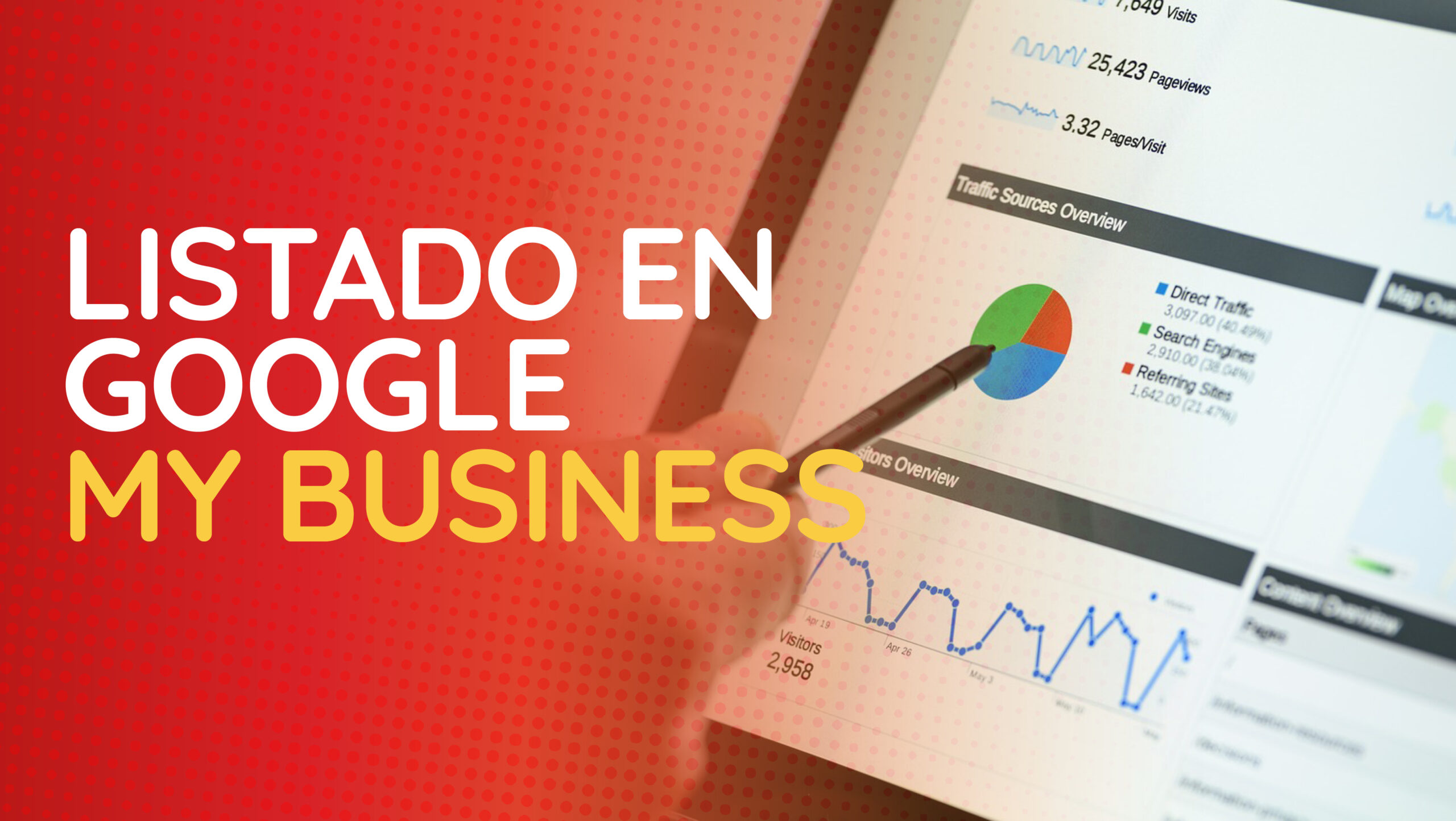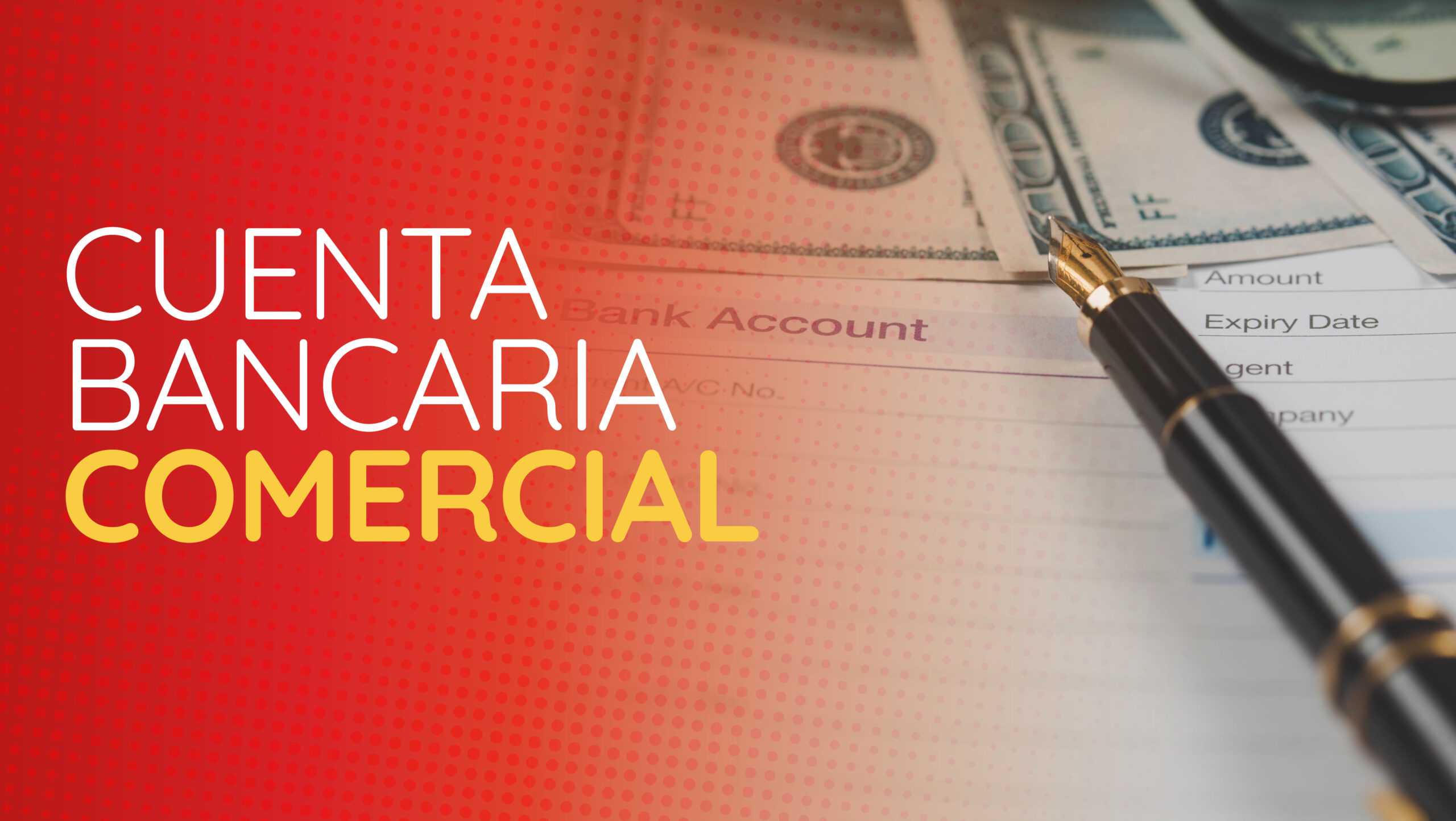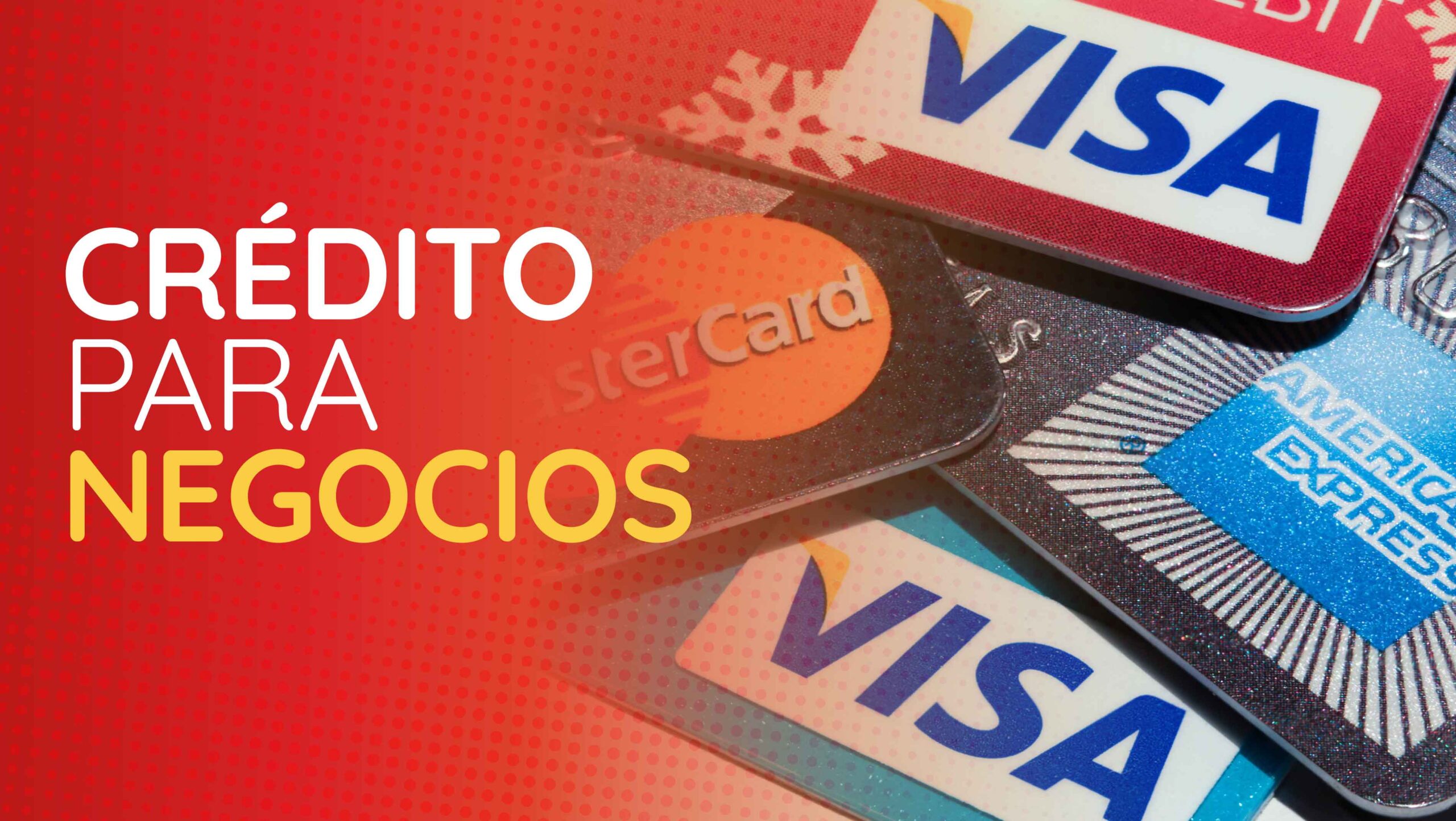Have you ever wondered how to finance your business idea to make it a reality? Do you want to know the essential steps to prepare properly and increase your chances of getting a loan for your business?
When an entrepreneur decides to start a business, one of the most significant challenges is raising the necessary capital to get his or her business idea off the ground. While there are various sources of funding, such as angel investors, venture capital or crowdfunding, bank loans remain a popular and accessible option. In this article, we’ll explore the first steps to getting a loan for your business, helping you properly prepare for this process.

In this article we will share with you how to get started with the search for capital and the essential preparations you need to take into account when applying for financing.
If you want to learn how to build credit for your business, download the guide:
Guide to Building Business Credit
Building business credit will help you have access to more options to access loans, with the best possible interest rates and repayment terms according to the financial situation you and your business are in.
We recommend that you consider the following tips before applying for a business loan. If you need help with a loan for your business, please visit our business page and fill out the form.
How to Get a Business Loan
- Evaluates the real need for financing
- Investigate financing options
- Check your credit history
- Prepare a solid business plan
- Estimate ability to pay
- Gather the necessary documentation
- Consider the warranty
- Be transparent
- Negotiate terms and conditions
- Stay in communication
Frequently Asked Questions
- Where can I get a loan to start or finance a business?
- What is the personal credit score needed to apply for a business loan?
- How can I build credit for my business?
- What should I consider before accepting a loan for my business?
1. Evaluates the real need for financing
Before you begin the process of applying for a loan, it is essential to determine how much money you need and for what purpose. Ask yourself:
Is this the right time to get a loan?
Will I be able to return the money within the agreed time?
What are the areas of my business that require this additional capital?
The key areas to consider within your operation are:
- Leadership. Loan to hire executive level position.
- Products. Loan to develop a new product.
- Marketing. Loan to promote products/services.
- Sales. Loan to support your sales team.
- Staff. Loan to make new hires.
- Cashflow. Loan to automate processes that help increase cash flow.
Doing a detailed financial analysis will help you understand your real needs and prepare you for the questions lenders will ask you.
2. Investigate financing options
Not all loans are the same. Different institutions offer a variety of financial products, each with its own interest rates, terms and requirements. Researching these options will help you choose the best one for your business. Some of the most popular options include:
- Traditional banks: offer a variety of loans with different conditions.
- Microfinance: ideal for small companies or startups that need smaller amounts.
- Government programs: sometimes, governments offer loans at low interest rates to promote entrepreneurship.
- Commercial lenders: there are networks of commercial lenders that offer different types of loans based on turnover, future sales, etc.
- Credit Unions: Several Credit Unions offer business loans, usually there will be several options in the area where you live.
3. Check your credit history
Your credit history is a crucial factor for most lenders. If you have a good credit history, you’re likely to get more favorable terms. On the other hand, a negative history can decrease your chances of obtaining financing. Review your credit report and, if necessary, take steps to improve it before you apply for a loan.
4. Prepare a solid business plan
A well-crafted business plan not only demonstrates that you have thought carefully about your business, but also provides lenders with the assurance that their money will be well invested. Your plan should include:
- Description of the company
- Market and competitive analysis
- Marketing strategy
- Financial projections
- Information about the management team
If you want to learn how to create a business plan, download the guide:
Guide to Create a Business Plan
5. Estimate your business’ ability to pay
Before borrowing money, it is essential that you determine your business’ ability to pay it back. Estimate your future income and expenses, and consider scenarios where things don’t go as planned. This will not only help you gain clarity on your financial capabilities, but will also be an essential tool during negotiations with lenders.
6. Gather the necessary documentation
Applying for a loan usually requires a number of documents to support your application. Although requirements may vary by institution, some of the most common include:
- Financial statements
- Tax returns
- Accounting records
- Operating licenses and permits
- Contracts with suppliers or customers
7. Consider the warranty
Many loans require you to offer collateral, which can be real estate, machinery, inventory, among others. Make sure you understand the implications of providing collateral and are willing to take the risk before committing yourself.
8. Be transparent
During the application process, it is essential that you are honest and transparent about your financial situation and plans. Withholding information or not being clear can create distrust and reduce your chances of getting the loan.
9. Negotiate terms and conditions
Don’t take the first offer you get. Take the time to negotiate the terms of the loan, such as interest rate, repayment terms and fees. Make sure you understand all the terms before you sign any contract. Be very wary of lenders in the marketplace charging excessive interest rates and taking advantage of your needs to make a high profit on every loan.
10. Stay in communication
Once you have obtained the loan, stay in communication with your lender. Report on the progress of your business, the difficulties you are facing and how you plan to overcome them. Good communication can be key if you need to restructure your loan or apply for additional financing in the future.
Obtaining a loan for your business is a process that requires preparation, research and negotiation. By following the above steps, you will increase your chances of getting the financing you need on favorable terms. Remember that a loan is a tool, and as such, it should be used wisely to make your business successful.
Where can I get a loan to start or finance a business?
Here are some of the options you can consider when applying for a loan for your business.
Bank & Credit Unions. If you have a checking account for your business, contact your banker to see what options you have available to access capital with your bank. It is important that you develop a good relationship with your banker and that he/she knows what you do well so that you can increase your chances of financial assistance with your bank. You can also open a business account with one of the credit unions available in your city. Credit unions offer different financing options for small and medium-sized businesses.
2. CDFIs. A CDFI, which stands for “Community Development Financial Institution,” is a private financial institution whose primary purpose is to provide credit and financial services to individuals and businesses that are often underserved by the traditional banking system. These institutions operate in the United States and are certified by the CDFI Fund of the U.S. Treasury Department. In the Opportunity Finance Network you can find CDFIs in various parts of the country.
CDFIs can be banks, credit unions, loan funds, among others. They often work in disadvantaged communities and specialize in serving clients who do not have access to traditional financial services due to barriers such as lack of credit history or low income.
Here’s how CDFIs help businesses raise capital:
- Flexible Lending: Unlike traditional banks, which tend to have stricter lending criteria, CDFIs are more willing to consider additional factors, such as the community impact of a business or its growth potential, rather than focusing solely on credit history.
- Competitive Rates and Terms: Although CDFIs offer loans to individuals and businesses that may be considered higher risk, they often offer more competitive rates and terms compared to alternative lenders.
- Counseling and Training: Many CDFIs not only provide capital, but also offer training and business counseling. This may include workshops on business planning, financial management and marketing, among others.
- Specialized Financing: Some CDFIs specialize in specific sectors or niches, which allows them to offer more customized financing and advice to companies in those fields.
- Long-Term Relationship Building: CDFIs often work closely with their clients to ensure their success, which can translate into a strong and lasting financial relationship.
- Community Connections: Because their mission is community development, CDFIs often have connections to other local organizations and resources that can benefit businesses.
- Impact Investing: CDFIs seek to create a positive impact on the communities in which they operate, so they are particularly interested in financing businesses that also have community or social objectives.
For businesses that have had difficulty obtaining financing through traditional channels, CDFIs can be an excellent option. Not only do they provide capital, but they also offer valuable support to help businesses grow and prosper.
Small Business Administration (SBA). The U.S. Small Business Administration (SBA) offers a variety of loan programs designed to meet the financing needs of small businesses. Here are some of the most popular types of loans offered by the SBA:
7(a) Program: This is the SBA’s best known and most widely used loan program. It offers general loans that can be used for multiple purposes, such as working capital, purchase of real estate or equipment, debt refinancing, among others.
CDC/504 loans: These loans are intended for the acquisition of fixed assets, such as real estate or machinery. In this program, the SBA collaborates with local Certified Development Centers (CDCs) and banks to offer long-term financing to small businesses.
Microloans: As the name implies, the Microloan Program offers smaller loan amounts than other SBA programs. They are designed for startups, growing companies or businesses that need small-scale financing. They can be used for working capital, inventory or equipment purchases, among other purposes.
Exporter Loans: The SBA offers several loan programs specifically designed to help businesses expand their export operations, including the 7(a) Exporter Loan Program, the Export Credit Program, and the International Trade Program.
CAPLines Program: Provides revolving lines of credit to help small businesses meet short-term needs, such as inventory purchases or contract financing.
It is important to note that each type of loan has its own requirements, terms and conditions. Small businesses interested in obtaining financing through the SBA should thoroughly research each option and consider working with an SBA loan consultant or expert to ensure they choose the right product for their needs.
To obtain a loan backed by the SBA:
- Visit the Loans page to find the loan that best suits your needs.
- Enter your zip code in Lender Match to find a lender in your area.
- Apply for a loan through your local lender
- Lenders will approve and help you manage your loan
4. Business Credit Cards. The use of credit cards as a source of financing is common, especially among small businesses and entrepreneurs. While this method offers quick access to capital, it can also come with higher interest rates compared to other means of financing. Here are some options and strategies related to using credit cards to finance a business:
Business Credit Cards: These cards are designed specifically for businesses. They often come with higher limits than personal cards and offer rewards such as discounts on office purchases, business travel or even cashback. It is essential to read the terms and conditions to understand fees, interest rates and benefits.
0% Initial Interest Credit Cards: Some cards offer a promotional period with a 0% interest rate. This means that you can finance purchases interest-free for a certain period of time (e.g., 12 months). However, it is crucial to pay off the balance before the end of the promotional period to avoid high interest rates.
Rewards and Cashback Credit Cards: By using cards that offer rewards or cashback, businesses can take advantage of certain benefits. For example, if your business involves frequent travel, a card that offers miles or points for travel can be beneficial.
Secured Line of Credit: Some cards allow business owners to secure a line of credit with a cash deposit. These cards can be useful for those with limited credit histories or lower credit scores.
Credit card-based financing: There are lenders that offer cash advances based on a business’ future credit card sales. While this can provide quick capital, it often comes with higher interest rates and fees.
Balance Transfers: If you have debt on a card with a high interest rate, some credit cards offer the option to transfer that balance to a lower interest rate or even 0% during a promotional period. This can help reduce financing costs.
Precautions:
It is critical to be cautious when using credit cards as a primary source of financing. Interest rates can be high, and balances can accumulate quickly.
It is always advisable to read and fully understand the terms and conditions of any credit card or financing agreement.
It is vital to have a strategy to pay off the balance and not rely solely on long-term credit card financing.
Credit cards can be a useful tool when used correctly, especially to cover short-term expenses or to take advantage of specific opportunities. However, for long-term financing or large investments, other options such as bank loans or investors may be more appropriate.
5. New Business Loans. Access to capital for new businesses is the most difficult type of financing to obtain. When you are able to raise capital at this stage it is because the lender trusts you.
The most important thing to understand is that a lender has very little knowledge about what your company will do in the future. Without a past business history, substantial assets or excellent credit history, new businesses are risky for lenders. Most banks and investors are not willing to take the risk. However, there are some lenders in the market willing to invest in you. If you would like to apply for a loan for your new business, CLICK here. We will do our best to help you get the capital you need for your new business.
6. Invoice Financing. Invoice financing, also known as factoring, is an option for businesses to obtain immediate access to the cash held on their unpaid invoices. It is especially useful for businesses that need liquidity to operate while waiting for payment from their customers. Here are the main options and how they work:
Traditional Factoring: In this option, a company sells its unpaid invoices to a factoring company in exchange for a cash advance. Typically, the factoring company advances 70% to 90% of the invoice value. Once the customer pays the invoice, the factoring company pays the remaining balance to the business, deducting a commission or fee for the service.
Recourse vs. Non-Recourse Factoring
Recourse Factoring: If the customer does not pay the invoice, the original company (the seller of the invoice) is responsible for reimbursing the factoring company for the amount advanced.
Non-Recourse Factoring: The factoring company assumes all risk of non-payment. If the customer does not pay, the factoring company cannot seek reimbursement from the original company. The rates for this type of factoring are usually higher due to the higher risk assumed.
Reverse Factoring: Instead of a company selling its invoices to a factoring company, in reverse factoring, it is the client (buyer) who initiates the process to finance its suppliers’ invoices through a financial institution. This allows the suppliers to receive payment quickly, while the customer can pay the invoice at a later date.
Online factoring: Thanks to technology, there are online platforms that connect companies with financiers willing to purchase their outstanding invoices. These services are often faster and more flexible than traditional options, but rates and terms may vary.
Import and export factoring: Specifically designed for companies doing business internationally, this type of factoring helps bridge the gap that can occur due to shipping times and differences in payment practices between countries.
Advantages of invoice financing
- Quick access to capital.
- There is no need to go into debt; it is not a loan.
- Approval is usually based on the creditworthiness of the customer, not the business selling the invoice.
Disadvantages
- Fees may be higher than other financing methods.
- Not all invoices are eligible; factoring companies will select those invoices from customers they consider most creditworthy.
- It can affect the customer relationship if not handled properly.
Before deciding on invoice financing, it is essential to understand all the fees involved and consider how it might impact customer relationships. For some businesses, especially those with low profit margins, factoring fees may not be affordable. However, for companies that need quick access to cash to grow or cover operating expenses, it can be an excellent option.
7. Line of Credit. A line of credit is a versatile financing tool that allows companies to access funds as needed, up to a pre-established limit. It is not a traditional loan that provides a fixed amount of money up front. Instead, with a line of credit, businesses have the flexibility to use the capital when they need it and only pay interest on the money they use. Here are the top small business line of credit options:
Traditional Line of Credit: Offered by most banks and credit unions. Requires an application and approval process. Usually backed by collateral, such as real estate or inventory. Has a set credit limit and interest rates that can be fixed or variable.
Unsecured Line of Credit: Does not require the business to provide collateral. Due to the higher risk to the lender, it usually has higher interest rates and lower credit limits.
Business Line of Credit Card: Works like a business credit card. Owners can make purchases or withdraw cash up to a preset limit. May offer rewards, such as points or cashback.
Working Capital Line of Credit: Designed specifically to finance the day-to-day operations of a business. It is not intended for long-term purchases, such as real estate or major equipment.
Commercial Real Estate Equity Line of Credit: Based on the equity in a commercial real estate owned by the business. Converts part of the equity in the property into an available credit limit.
Online Lines of Credit or Fintech: Offered by online lenders or fintech platforms. The application process is usually faster and less rigorous than traditional banks. May have higher interest rates due to higher risk and the convenience of quick access to capital.
Seasonal Line of Credit: For businesses that have seasonal fluctuations in income, such as tourism or agricultural businesses. Helps cover expenses during low periods and is paid during revenue peaks.
Advantages of a line of credit
- Flexibility to use capital as needed.
- You only pay interest on the amount you use.
- It is reusable; as you pay back the money used, that amount becomes available again.
- It can improve the creditworthiness of the business if properly managed.
Disadvantages of a line of credit
- Some lines of credit may have higher interest rates.
- If not managed properly, it can lead to excessive indebtedness.
Before applying for a line of credit, it is essential that small business owners carefully evaluate their financial needs and repayment capacity. In addition, it is vital to compare different options and read all the terms and conditions to ensure that the line of credit fits the needs and capabilities of the business.
8. Crowdfunding. Crowdfunding is a modern form of capital raising that allows individuals or companies to raise funds from a large number of people, usually through an online platform. This strategy has gained popularity in the last decade, allowing many small businesses and entrepreneurs to access the capital needed to start or expand their projects. Here are the main crowdfunding options for small businesses:
Reward Crowdfunding:
- This is the best known model. Donors give money in exchange for a reward, which can be the product itself or a benefit related to the project.
- Popular platforms: Kickstarter, Indiegogo.
Equity Crowdfunding:
- Investors provide capital in exchange for an equity stake in the company.
- It allows startups and small businesses to obtain financing without resorting to angel investors or venture capitalists.
- Popular platforms: SeedInvest, CircleUp, StartEngine.
Debt Crowdfunding (Peer-to-Peer Lending):
- Companies apply for loans that will be financed by multiple investors rather than one bank.
- Investors receive repayment of the loan with interest.
- Popular platforms: LendingClub, Prosper, Funding Circle.
Real Estate Crowdfunding:
- Allows investors to provide capital for real estate projects.
- Returns can come from renting or selling the property.
- Popular platforms: Fundrise, RealtyMogul.
Crowdfunding Donations:
- People donate money without expecting anything in return, usually because they believe in the cause or mission of the project.
- It is common for social causes, but some companies with a strong social or environmental impact may benefit.
- Popular platforms: GoFundMe, JustGiving.
Royalty Crowdfunding:
- Investors contribute capital in exchange for a percentage of future income until a certain amount has been paid.
- It is popular in creative industries, such as music or publishing.
Advantages of crowdfunding:
- Access to a wide audience and potential customers.
- Market validation: if your project receives funding, it is a sign that there is interest in your product or service.
- It does not always involve ceding equity or assuming debt.
- Potential to gain visibility and generate publicity.
Disadvantages:
- Not all projects will be funded; a compelling proposal and, often, a strong marketing campaign are needed.
- Some platforms charge fees regardless of whether the project reaches its funding goal.
- If you opt for equity crowdfunding, you are giving up a part of your company.
- Public pressure: if you fail to deliver on your promises, there may be negative repercussions for your business reputation.
Before embarking on a crowdfunding campaign, it is essential to research and choose the right platform for your project, prepare an attractive presentation and have a clear plan on how you will use the funds. In addition, it is essential to communicate with backers and keep them informed about the progress of the project.
What is the personal credit score needed to apply for a business loan?
The credit score needed to apply for a business loan can vary widely depending on the type of loan, the lender and the amount requested. However, the credit score of a business owner or owners plays a crucial role, especially for newer businesses or those without an established business credit history. Here’s an overview of how different credit score ranges can affect your eligibility:
Excellent (720-850):
- With a score in this range, not only are you likely to qualify for most business loans, but you could also get the lowest interest rates available.
Bueno (680-719):
- Even in this range, many financial institutions will be willing to lend to you. Interest rates may be slightly higher than those offered to those with excellent scores.
Regular/Fair (620-679):
- While it is still possible to obtain a business loan with a score in this range, options may be more limited, and interest rates may be significantly higher. Financial institutions view borrowers in this range as a moderate risk.
Poor (580-619):
- Obtaining a business loan with a score in this range will be a challenge. Options will be limited, and interest rates are likely to be quite high. Some alternative or subprime lenders may consider lending to you, but the terms will not be as favorable.
Very poor (300-579):
- In this range, it will be extremely difficult to obtain a traditional business loan. You may need to consider other financing options or work on improving your credit score before applying for a loan.
It is important to note that in addition to the owner(s) personal credit score, many lenders will also consider the business’ credit history, length of time in operation, annual income and other financial factors. There are also alternative lenders and programs that may have less stringent requirements than traditional banks, but often come with higher interest rates.
Finally, if you are considering applying for a business loan and are concerned about your credit score, it is advisable to review your credit report in advance and correct any errors. It is also helpful to talk to potential lenders about their specific requirements and, if necessary, work on improving your credit score before you apply for the loan. If you need help improving your credit score, contact ASAP Credit Repair.
How can I build credit for my business?
Building credit for your business is crucial. A strong business credit history can allow you to access financing on more favorable terms, build relationships with suppliers and improve the overall perception of your business. Here is a step-by-step guide to building credit for your business:
Establishes a Legal Entity:
- Register your business as an LLC, corporation or other legal entity. Separating your personal finances from your business finances is critical to building business credit. Consult with your attorney and CPA as to which legal entity is best for you.
Obtain an Employer Identification Number (EIN):
- It’s like a Social Security number for your business. You will need it to open business bank accounts and file your corporate taxes.
Open a Business Bank Account:
- Keep your business finances separate from your personal finances.
- Be sure to choose an account that suits your needs and avoid overdraft fees.
Register your business with the Commercial Credit Bureaus:
- The main ones are Dun & Bradstreet, Equifax Business and Experian Business.
- To get started with Dun & Bradstreet, for example, you can apply for a D-U-N-S number, which is a unique identifier for companies.
Establishes Lines of Credit with Suppliers and Vendors:
- Work with suppliers who report your payments to corporate credit bureaus.
- Always pay on time or, better yet, ahead of time.
Get a Business Credit Card:
- Choose one that suits your business needs and reports to the major business credit bureaus.
- Use the card for regular business expenses and pay the balance in full each month.
Consider a Commercial Loan or Line of Credit:
- If you need capital to expand or handle operating expenses, consider getting a business loan or line of credit. Pay on time to build a positive credit history.
Pay on Time:
- Always pay your bills and debts on time. Your payment history is a critical component of your business credit score.
Monitor your Business Credit:
- Regularly review your business credit reports to make sure the information is accurate.
- Correct any inaccuracies you find. Inaccuracies can negatively affect your score.
Limits Queries:
- Each time a lender or vendor reviews your credit, an inquiry is logged. Too many inquiries in a short period of time can lower your business credit score.
Keep your finances in order:
- The more solvent and profitable your business is, the more attractive you will be to lenders.
Building credit for your business doesn’t happen overnight. It is an ongoing process that requires careful financial management and strategic decision making. However, with time and effort, you can establish a solid credit history that will benefit your business in the future.
What should I consider before accepting a loan for my business?
Before signing a loan for your business, it is essential to pause and evaluate several aspects to make sure you are making the right decision. Here are several key points to consider:
Interest Rate:
- Is it fixed or variable?
- How does it compare to the rates of other loans available in the market?
- Make sure the rate is manageable and does not cause undue stress on your company’s finances.
Loan Term:
- How long will you have to repay the loan?
- Does the term align with the nature and expectations of your investment?
Monthly Payments:
- Can you afford the monthly payment with the projected cash flow of your business?
- Check if the loan allows prepayments without penalty, in case you want to pay it off early.
Positions and Committees:
- Check for hidden fees, origination fees, prepayment penalties or any other additional costs.
Warranties:
- Is the loan secure or unsecured?
- If collateral is required, are you comfortable putting up specific assets, such as property or equipment, as collateral?
Flexibility:
- Does the lender offer flexible options in case of financial difficulties, such as grace periods or debt restructuring?
Terms and Conditions:
- Read the contract carefully and make sure you understand all the terms and conditions, including the “fine print” clauses.
Loan Provider:
- Is the lender reputable?
- Research reviews and, if possible, talk to other business owners who have worked with that lender.
Use of Capital:
- Establish and clearly understand what you will use the borrowed money for. This is essential to maximize your return on investment and ensure that the loan will benefit your business.
Impact on your credit:
- Consider how the loan will affect your business and personal credit. Don’t borrow more than you can handle.
Total Loan Cost:
- Be sure to calculate the total cost of the loan, including interest and fees, to fully understand what you will have to repay.
Additional Clauses:
- Pay attention to any riders, such as restrictions on obtaining additional financing or requirements to provide regular financial updates to the lender.
Legal and Financial Advisory:
- Consider getting legal and financial advice. A lawyer or financial advisor can help you understand the contract and make sure the terms are fair.
Taking out a loan is a significant decision that can affect the financial and operational health of your business. Take the time to do your research, understand all the implications and, if possible, get a second opinion before you sign.
Get a Business Loan Now
In summary, the best options for obtaining a loan for your business include:
- Banks & Credit Unions
- CDFIs
- SBA
- Business Credit Cards
- New Business Loans
- Invoice Financing
- Line of Credit
- Crowdfunding
It is very important that you take into consideration that there are different financing options for your business, whether it is a new business or an established one. We hope this article provides answers to some of your questions regarding business loans. Please share it with family and friends who may benefit from this information. And if you would like us to help you find financing options through our network of lenders, please fill out the form below:
* Disclaimer: Tu Futuro is NOT a lender, does not make loan offers and does not broker loans online to lenders or lending partners. Businesses interested in a loan that reach www.tufuturofinanzas.com are connected with a lender or lending partner and are redirected only to lenders or lending partners that offer commercial loan products.





